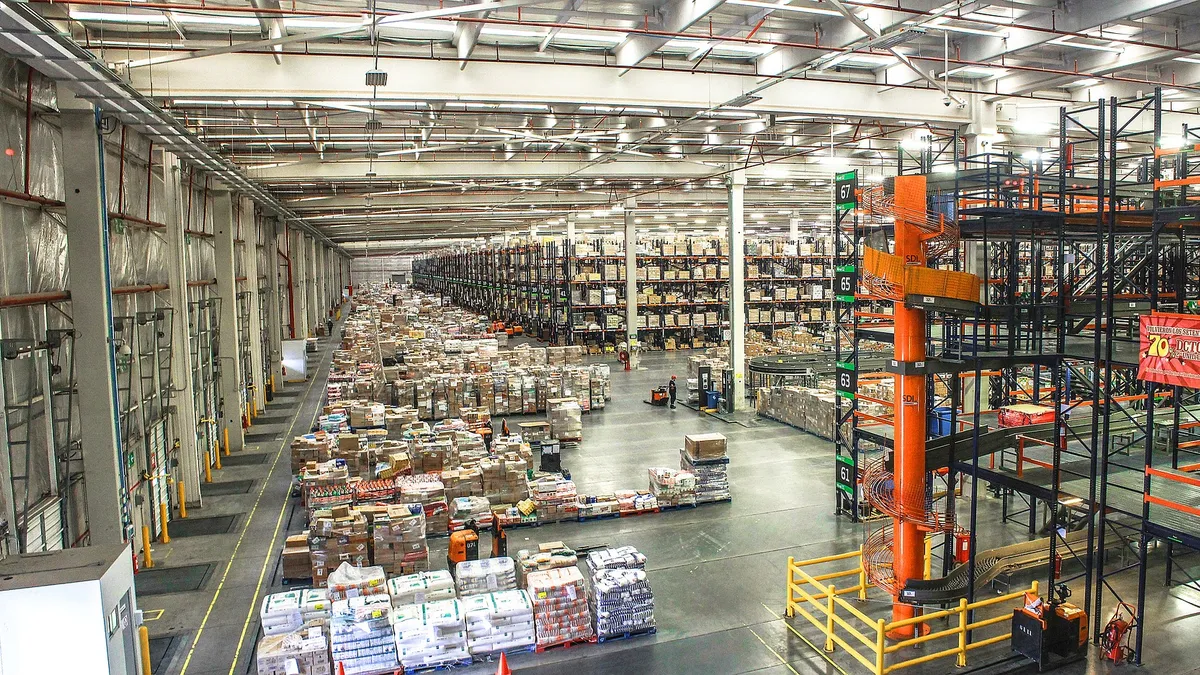Dive Brief:
- The growing threat of distribution center theft is a rising challenge for businesses, as the Internet has made stolen good easier to sell anonymously.
- A recent Warehouse Education and Research Council (WERC) meeting revealed that theft typically involves company insiders who then collude with drivers who then move the stolen goods out of the distribution center, Supply Chain Digest reported.
- Of delivery drivers surveyed, 40% revealed that they had been propositioned to commit conspiracy, and often other employees who are aware of the theft are paid to ignore the activity and keep quiet.
Dive Insight:
Theft inside distribution centers is a widespread problem, mostly due to the difficulty of prevention. In addition, the magnitude of the scale of goods moving through the centers invites thievery: when endless, countless items encircle every worker, the temptation to remove it from inventory for personal profit is high.
Two methods seem to best discourage employee theft, as highlighted by Inbound Logistics: an embedded security professional, and an anonymous contact option. The security professional masquerades as an employee, while in reality is observing his fellow workers. This is a slow method of discovery and depends on the persistence of the professional involved, and the likelihood of mistaken overconfidence on the part of the thief.
The anonymous tip option is another alternative. In this scenario, employees who know about theft are provided an opportunity to report what they know, suspect, or observe without leaving a name. Tip lines are maintained by outside sources so as to preserve the anonymity of those reporting. However, tip lines can be abused by dissatisfied workers who provide misleading or false information. Employers who act on such information should be certain to understand their legal rights, and those of their employees, before making accusations.













